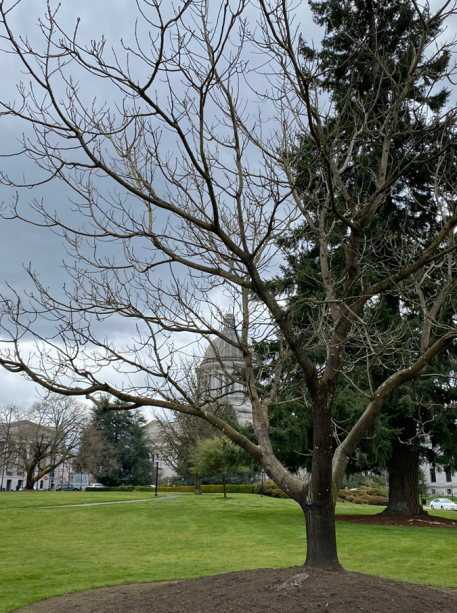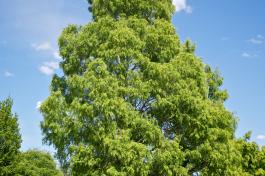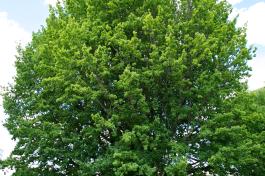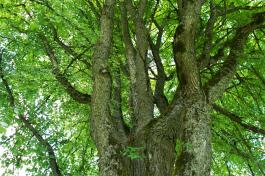Bush Butternut (White Walnut)
Juglans cinerea
Learn about the Bush butternut (white walnut) including when and why it was planted, how to identify it, and where to find it on campus.
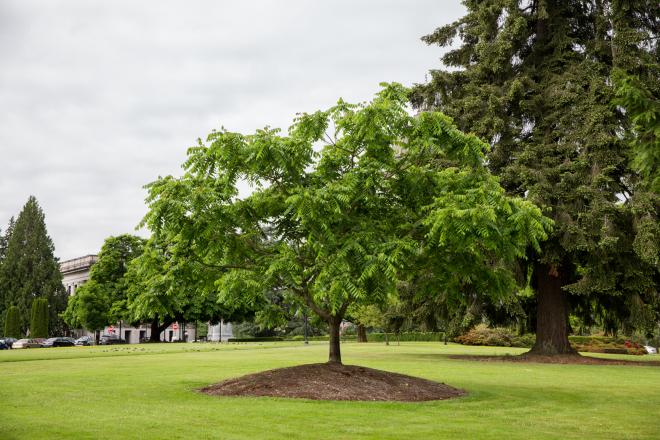
Tree Facts
Traits
- Compound leaf with 11-19 leaflets
- Dry nuts that don't split open when ripe
- Ridged or plated bark
- Susceptible to cankers and leaf blister mites
Native Range
- Midwestern United States
- Northeastern United States
Story of the Tree
The tree is named after Black pioneer George Bush, who led wagon trains of families from Missouri on the Oregon Trail to establish the first non-Indigenous American settlement in the Washington Territory.
This tree is from an offspring of the original Bush butternut tree, which stood on Bush's original farmland for over 170 years until it collapsed in 2021.
Local historians began to propagate this tree in order to save its genetic purity. The Capitol Campus is proud to have one of these offspring to honor our local history.
The Bush Butternut tree on the Capitol Campus began to produce nuts in 2014, which are safe for both humans and animals to eat.



